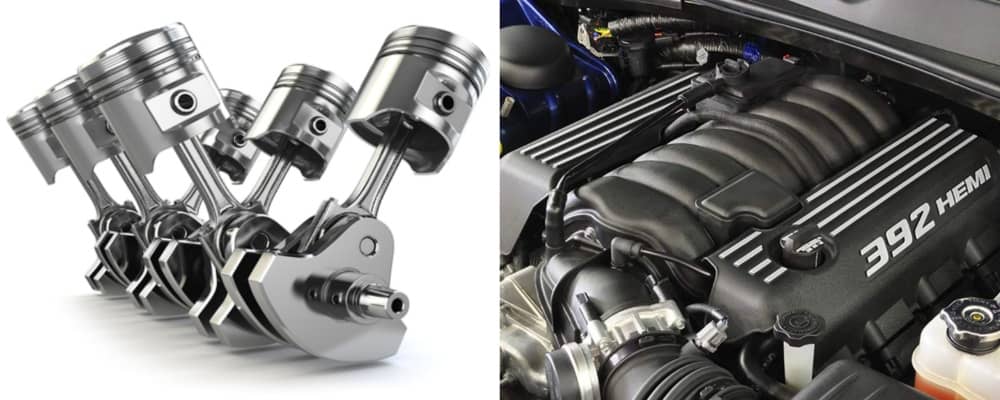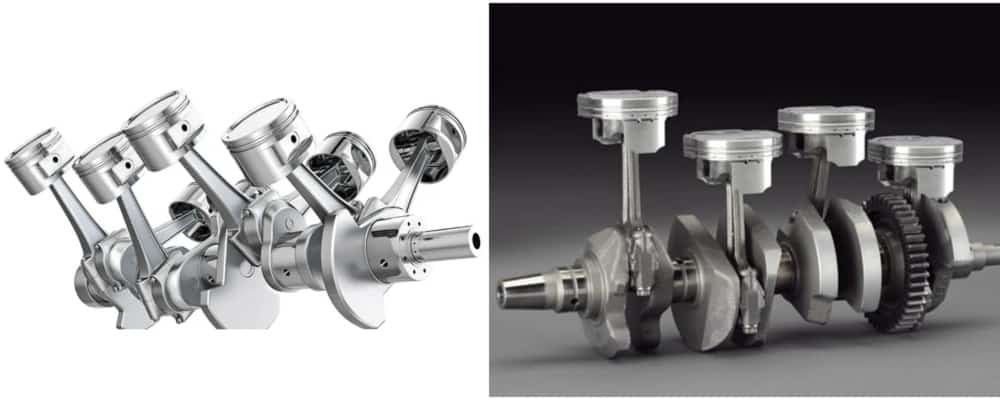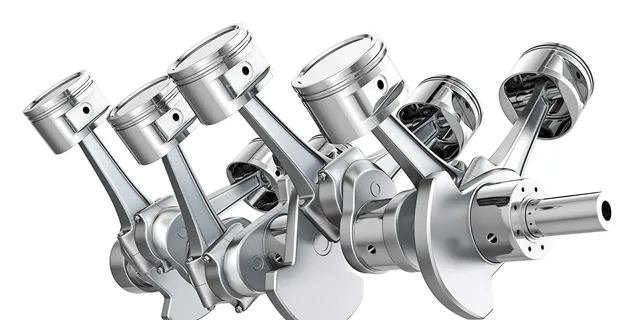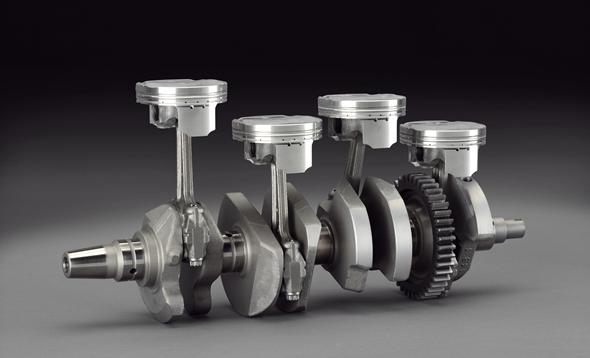
The V8 engine is the heartbeat of the muscle and supercar. A V8 engine means there are two four-cylinder engines in one. So, if the V8 is two Four-Cylinder engines in one, how many crankshafts does a V8 have?
All V8 engines have one crankshaft. The V8 engine has four cylinders on each side configured at a 90⁰ angle and connected to a single crankshaft. Flat-plane crankshafts used in European cars and cross-plane crankshafts found in most muscle cars are the two designs commonly found in a V8 engine.
Nothing turns heads like a V8 passing you out on the road. The distinct V8 sound is one of the big reasons it is such a favorite with car enthusiasts.
Muscle cars and supercars are known to be powered by V8 engines, but they sound and perform differently. The reason for the difference between muscle cars and V8 supercars is the two types of crankshaft designs used. We’ll talk about that later in this article.
Why V8 Engines Have One Crankshaft
The crankshaft in a V8 engine is responsible for converting return motion into rotating motion. It transfers power to the transmission at the rear and the fan belt at the front. In a V8, any crankshaft won’t do because V8 engines are powerful motors that need a strong crankshaft design to withstand the torque it produces.
Having two crankshafts on the V8 engine would mean that you would have two transmissions and would require a balancing act of engineering that isn’t logical or profitable.
Having a single point on an engine that transfers the power to the transmission is why V8 engines and all cars only have one crankshaft. The crankshaft regulates the motion of the pistons, and each crank design performs differently in a V8.
A V8 engine has only one crankshaft, but two varieties of crankshafts are typically used. Each type of crankshaft is engineered with different performance capabilities.
The most common V8 crankshaft is the cross-plane crankshaft found in almost every American muscle car, and the flat-plane crankshaft is mostly found in European V8 supercars.
The cross and flat-plane crankshaft have been around for a long time, and both are unique in what it adds to the V8 engine design.
However, the cross-plane crankshaft is used more, especially in the United States. The cross-plane crankshaft’s cousin, the flat-plane crankshaft, is becoming more appealing though to the muscle car enthusiast because of its high revving capabilities.
It is hard to think that such an icon of an engine only has one crankshaft, but it is true. All V8 engines, no matter how brilliant, only have one crankshaft.
Are There Different Crankshafts For V8 Engines?

V8 engines use two kinds of crankshaft designs. Each type of V8 crankshaft has been around for a while, but both are still popular and used in their respective categories.
Manufacturers prefer to use either a flat-plane crank or an cross-plane crank in their cars, depending on the performance they wish to have for the specific motor.
Here is a comparison of the two types of crankshafts used in V8 engines.
Flat-Plane Crankshaft

Flat-plane crankshafts go back to the beginning of the automotive industry because it was simpler to manufacture. Today flat-plane crankshafts are mostly found in European race cars, but some famous American-made cars like Ford Shelby GT350 still use a flat-plane crankshaft.
The flat-plane crank gets its name from its design. The crank pin journals on the Flat-crankshaft circles 180⁰, and you can cut right through the center points with a two-dimensional plane which is why it is called a flat-plane crank.
A cross-plane crank has its crank pin journals at 90⁰, and you need two-dimensional planes that are vertical to each other to cross through the center.
Flat-plane crankshafts have good and bad qualities, they produce higher rpm, better-tuning efficiency, and sound great.
The flat-plane cranks drawback is that it has a high noise vibration harshness and a shorter engine lifespan. Its firing order makes it unique because it fires evenly between both banks giving the V8 engine a smooth feel.
The flat-plane V8 is two inline four-cylinder engines joined at the crankshaft to make it easy to go back and forth between each cylinder bank. With the cross-plane crankshaft V8, it is impossible to go back and forth evenly between cylinder banks, no matter what firing order you use.
Flat-plane V8 engines fire evenly, and when you look at the exhaust pulses coming out of each cylinder, they are timed almost perfectly.
Each pulse coming down the header from the exhaust create a small vacuum behind it called scavenging. Scavenging is a prosses where the exhaust gas is sucked out of the next cylinder.
Cross-Plane Crankshaft

The cross-plane crankshaft V8 engine’s exhaust pulses clash and have a negative scavenging effect. Clashing exhaust gas makes breathing difficult for the V8 engine, especially at high rpm.
When a V8 engine increases speed, breathing efficiency becomes important, which is why a flat-plane V8 revs higher than a cross-plane V8 engine.
Another advantage of a flat-plane crankshaft is that all the cylinders behave the same. When comparing the flat-plane crankshaft to the cross-plane crankshaft V8, the cross-plane crank has some cylinders that underperform against others.
When performance-tuning a cross-plane crankshaft V8, it is set to the lowest performing cylinder, which means you must tone it down to account for the cylinder that can’t.
The downside of the flat plane crank is the noise vibration harshness caused by the secondary imbalance of the engine. Cross-plane V8 engines run smoother because they have cylinders that fire every 90⁰ instead of every 180⁰ and provide a smooth engine cycle.
Conclusion
The V8 is two four-cylinder engines next to one another connected with one crankshaft. All V8 engines only have one crankshaft because having more than one would be impractical and difficult to execute.
Although the V8 engine only has one crankshaft, there are V8’s that run with a cross-plane crankshaft, mostly in the USA, and other V8 engines that use the flat-plane crankshaft that are popular in Europe.
